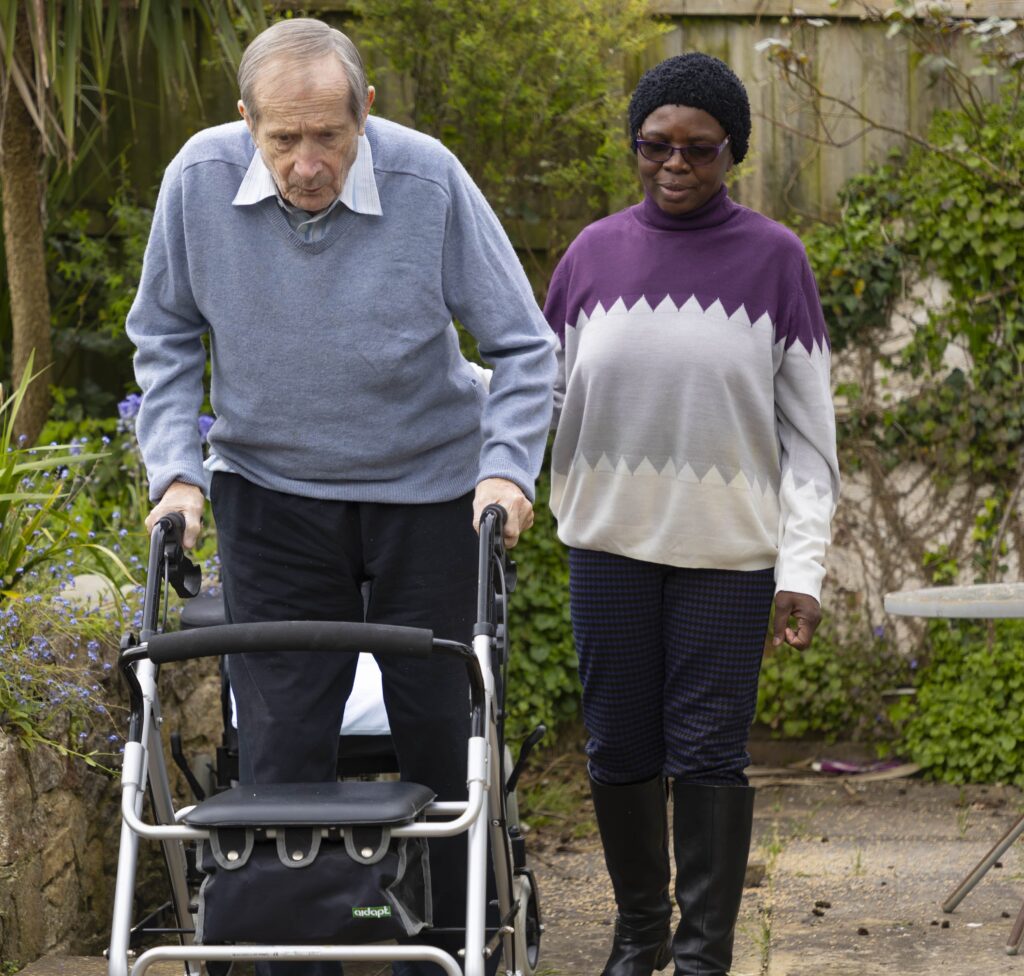Huntington’s disease is a progressive neurological condition that affects the brain and nervous system. It is not caused by lifestyle or choice, but by a genetic change that impacts movement, cognition, and behaviour over time. Every person with Huntington’s disease experiences it differently, with unique symptoms, progression, and challenges.
We understand that living with Huntington’s disease, or supporting a loved one with the condition, can bring both challenges and meaningful moments. Through our specialist Huntington’s disease care and support services, we provide personalised assistance that focuses on promoting independence, confidence, and well-being.
Our experienced care professionals offer flexible support through live-in care, home care, and our care and nursing homes. We adapt our approach to each person’s individual communication style, routines, and preferences to ensure comfort, understanding, and consistency.
If needs change or become more complex, we are fully equipped to adjust the level and type of support to suit your circumstances, ensuring that you or your loved one continues to live safely, comfortably, and with dignity and respect.

What is Huntington’s disease care?
Huntington’s disease care provides personalised support for people living with this progressive neurological condition, helping them manage the physical, cognitive, and emotional challenges it can bring. Because every person’s experience of Huntington’s disease is unique, the level and type of support is tailored to each individual’s needs and preferences.
Our Huntington’s disease care services are designed to help individuals maintain independence, confidence, and quality of life. Depending on your needs, care may include 24-hour live-in support for ongoing assistance, regular home care visits for daily support, or tailored care within one of our care and nursing homes.
From personal care and symptom management to emotional support and companionship, we adapt our approach to ensure comfort, dignity, and consistency at every stage of life.

Our Huntington’s disease support services
Our Huntington’s disease support services are designed to provide the best care for people living with Huntington’s disease, built entirely around each person’s unique needs, preferences, and goals. We create personalised care plans that focus on maintaining independence, managing symptoms, and supporting quality of life, ensuring you or your loved one receives the right level of support at every stage of the condition.

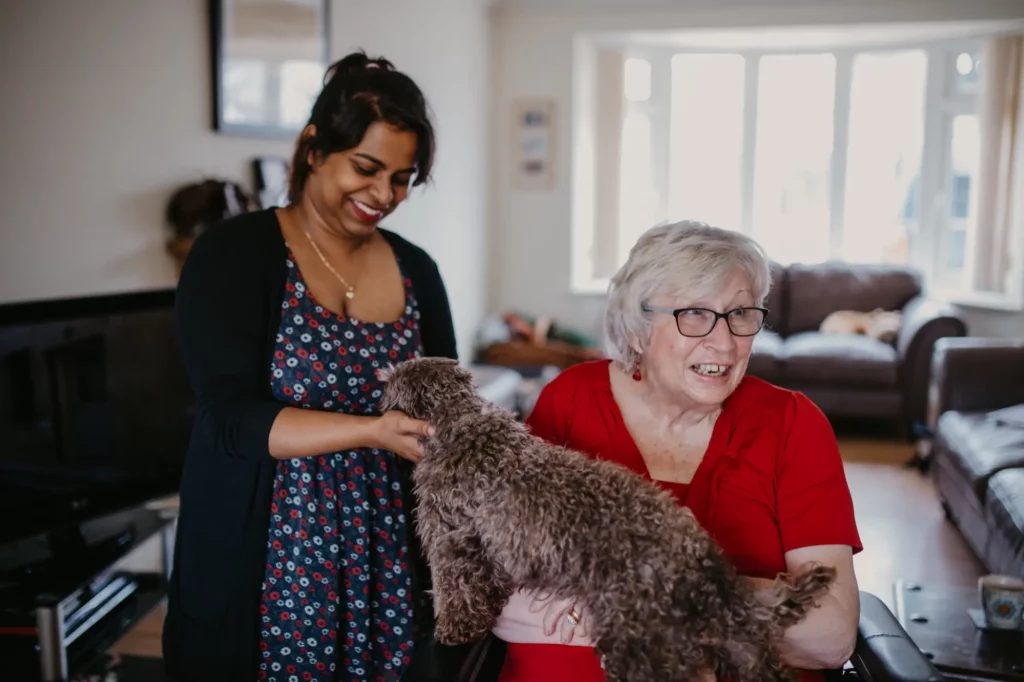
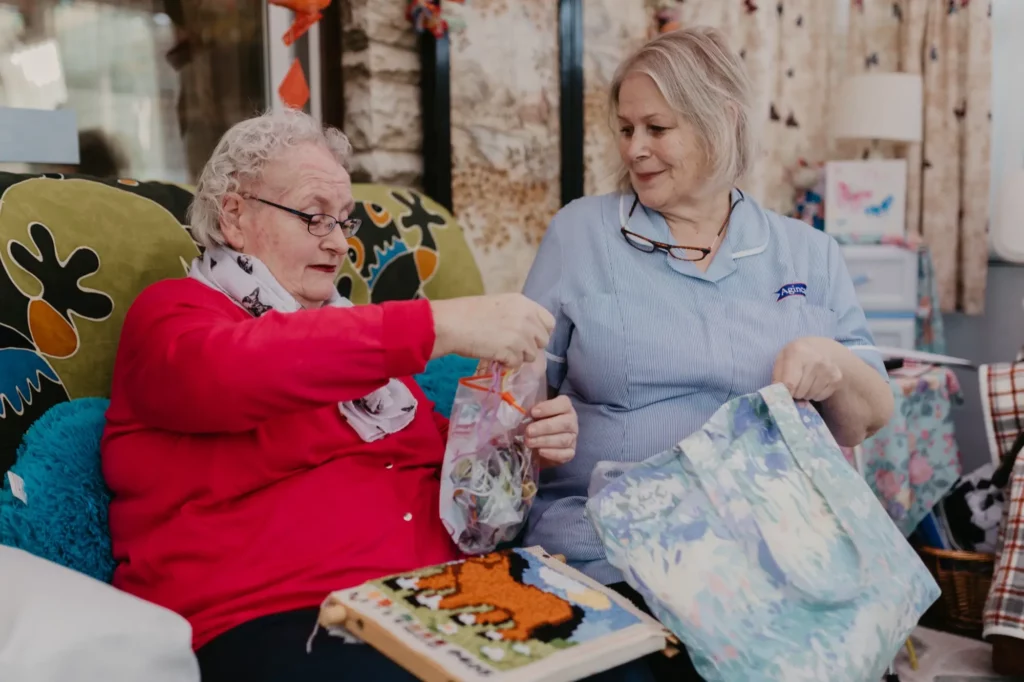
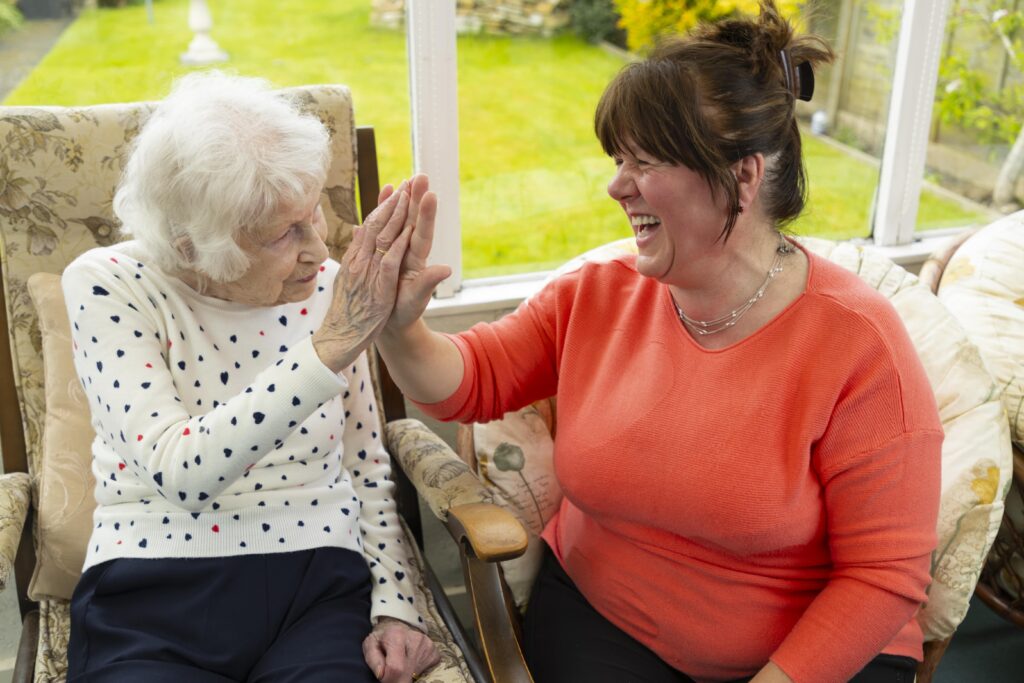

Specialist Huntington’s Disease care
Our specialist Huntington’s disease care supports people with a wide range of needs, including movement difficulties, cognitive changes, behavioural challenges, and co-occurring conditions such as anxiety, depression, or other neurological issues. Every care plan is tailored to the individual’s physical, cognitive, emotional, and social needs to ensure the best outcomes, independence, and quality of life.
Local Authority and NHS Partnerships
Agincare works closely with local authorities and the NHS to help people access the right level of support for Huntington’s disease and related needs. We partner with over 60 local authorities and NHS trusts across England, providing fully managed, tailored care packages. These partnerships ensure continuity of care, allowing individuals to access expert support in the community and benefit from a structured, supportive environment with the right interventions and ongoing assistance.
Nursing Care
We provide expert nursing care as part of our specialist Huntington’s disease services, supporting clients with complex health, personal, and neurological needs. Our team delivers personalised care including health monitoring, medication management, support with daily living, and assistance with movement, cognition, or behavioural challenges, helping clients to live safely, comfortably, and as independently as possible.
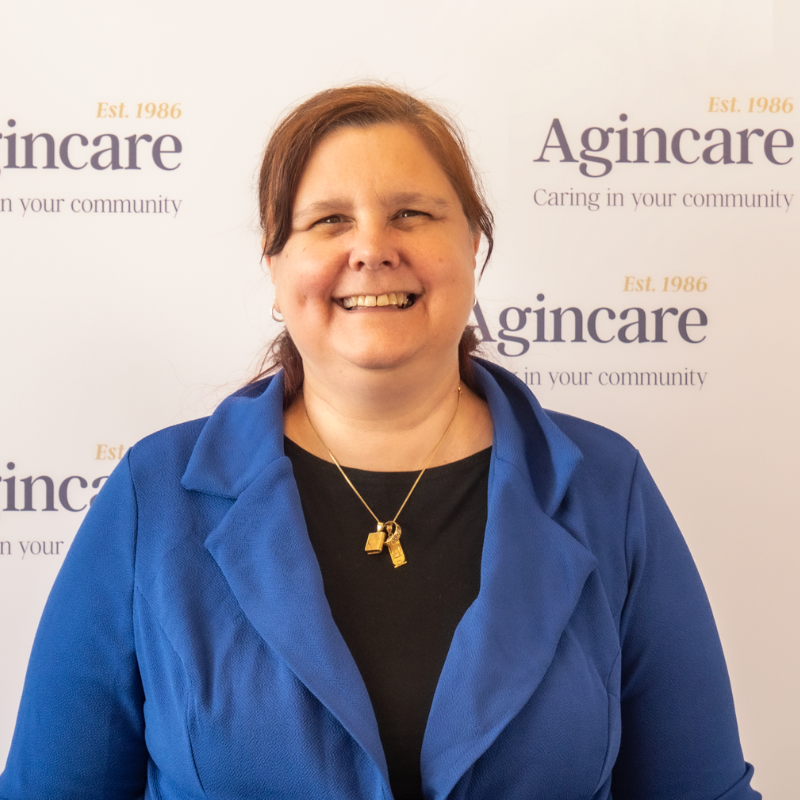
Meet Cher – Our Clinical Lead
Cher has enjoyed a long and varied career in health and social care across Europe and the UK. A registered nurse, she set up her own domiciliary care service in Monaco, later expanding it into France, supporting people with complex care needs. Before joining Agincare in April 2023, Cher worked for the DWP in disability analysis and as a Mental Function Champion. Cher oversees the clinical aspects of our live-in care service, including quality assurance, technical competency, and training.

Registered Nurse Care and Nursing Associates
Our specialist Huntington’s disease services are supported by highly trained registered nurses and nursing associates, providing expert care for individuals with complex needs.
Registered nurses deliver personalised clinical care, including support with health conditions, symptom management, medication administration, and coordination with other healthcare professionals. They ensure that each person’s medical and well-being needs are met safely and effectively, supporting independence and quality of life.
Nursing associates work alongside registered nurses to provide day-to-day support, help with personal care and daily living activities, and assist in implementing personalised care plans. Their role bridges clinical care and hands-on support, helping individuals maintain dignity, comfort, and consistency in their care.
Together, our nursing teams provide a seamless approach to Huntington’s disease care, ensuring that both medical and personal needs are met with professionalism, compassion, and expertise.

Costs of Huntington’s Disease care
The cost of Huntington’s disease care varies depending on the type of service, level of support, and complexity of individual needs. Understanding Huntington’s disease support costs can help you plan and choose the right care for yourself or your loved one.
Our live‑in care for Huntington’s disease starts from £1,135 per week, with transparent pricing and tailored quotes based on individual needs. Our experienced care advisers can guide you on paying for care and help you explore funding options to ensure the right support is in place.
Already receiving Huntington’s disease care and support? You could be paying more than you need to. Find out quickly with our Cost Savings Calculator, a simple tool that helps you compare your current care costs and see how much you could save with Agincare.

CQC information
When you are looking for information, be sure to visit the Care Quality Commission’s website. The CQC monitors and inspects care services and publish what they find to help you find the best care.
Funding
At Agincare, we work closely with individuals, local authorities, case managers and solicitors to ensure you receive the right funding and support for your needs. Our experienced team can guide you through available options, including local authority funding, NHS continuing healthcare and privately funded care, helping you make informed decisions with confidence and transparency.
Why choose Agincare’s Huntington’s Disease services?
Our Huntington’s disease services are trusted by thousands of families, local authorities across the country, and the NHS to deliver reliable, high-quality care. Our bespoke, fully-managed service is regulated by the CQC and rated ‘Good’.

One of the largest independent care providers in England, with decades of specialist care experience

Family-owned care provider established in 1986

Rated excellent on Trustpilot

Fully managed care provider

24/7 updates on your package of care via our app

Fully trained live-in care workers directly employed by us

Immediate and emergency starts available

Tailored support for varying levels of need, including specialist nurse-led care for complex conditions

Dedicated care supervisor to oversee your care

No lengthy contracts or exit fees – flexible, transparent support

Offer a range of services including live-in care, home care and care homes

All of our care workers are English-speaking and enhanced DBS checked
Reviews of our services




How to arrange care
Getting started with Huntington’s disease care is simple and obligation‑free. Our step‑by‑step process makes arranging support straightforward and stress‑free:
Our expert team is here to guide you through every step with compassion and clarity, and there is no obligation to proceed.

Frequently asked questions
Huntington’s disease is a condition that stops parts of the brain working properly over time. It’s passed on (inherited) from a person’s parents.
The symptoms usually start at 30 to 50 years of age, but can begin much earlier or later in life.
Symptoms of Huntington’s disease can include:
Difficulty concentrating and memory lapses
Depression
Stumbling and clumsiness
Involuntary jerking or fidgety movements of the limbs and body
Mood swings and personality changes
Problems swallowing, speaking and breathing
Difficulty moving
Huntington’s disease is caused by a gene that results in parts of the brain becoming gradually damaged over time.
You’re usually only at risk of developing it if one of your parents has or had it. Both men and women can get it.
If a parent has the Huntington’s disease gene, there’s a:
1 in 2 (50%) chance of each of their children developing the condition – affected children are also able to pass the gene to any children they have.
Very occasionally, it’s possible to develop Huntington’s disease without having a history of it in your family. But this is usually just because one of your parents was never diagnosed with it.
There’s currently no cure for Huntington’s disease or any way to stop it progressing. But treatment and support can help reduce some of the problems caused by the condition.
Everyone is different, but symptoms usually start to appear between the ages of 30-50.

